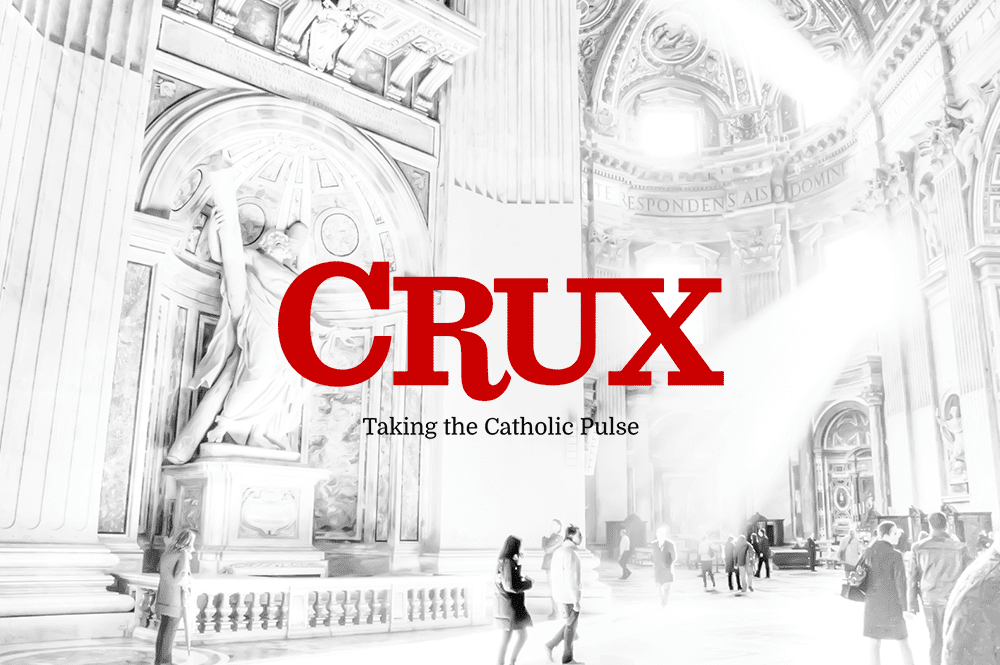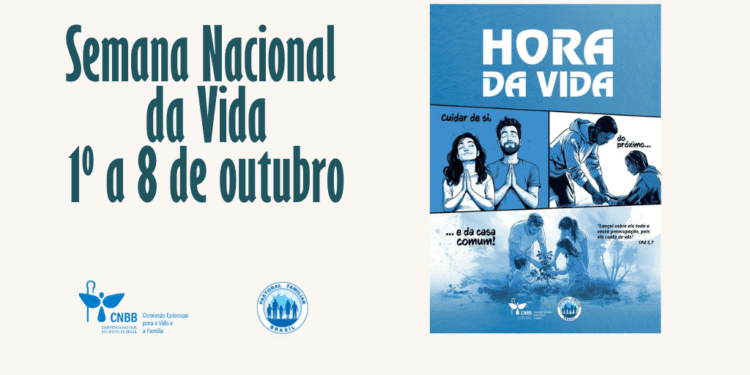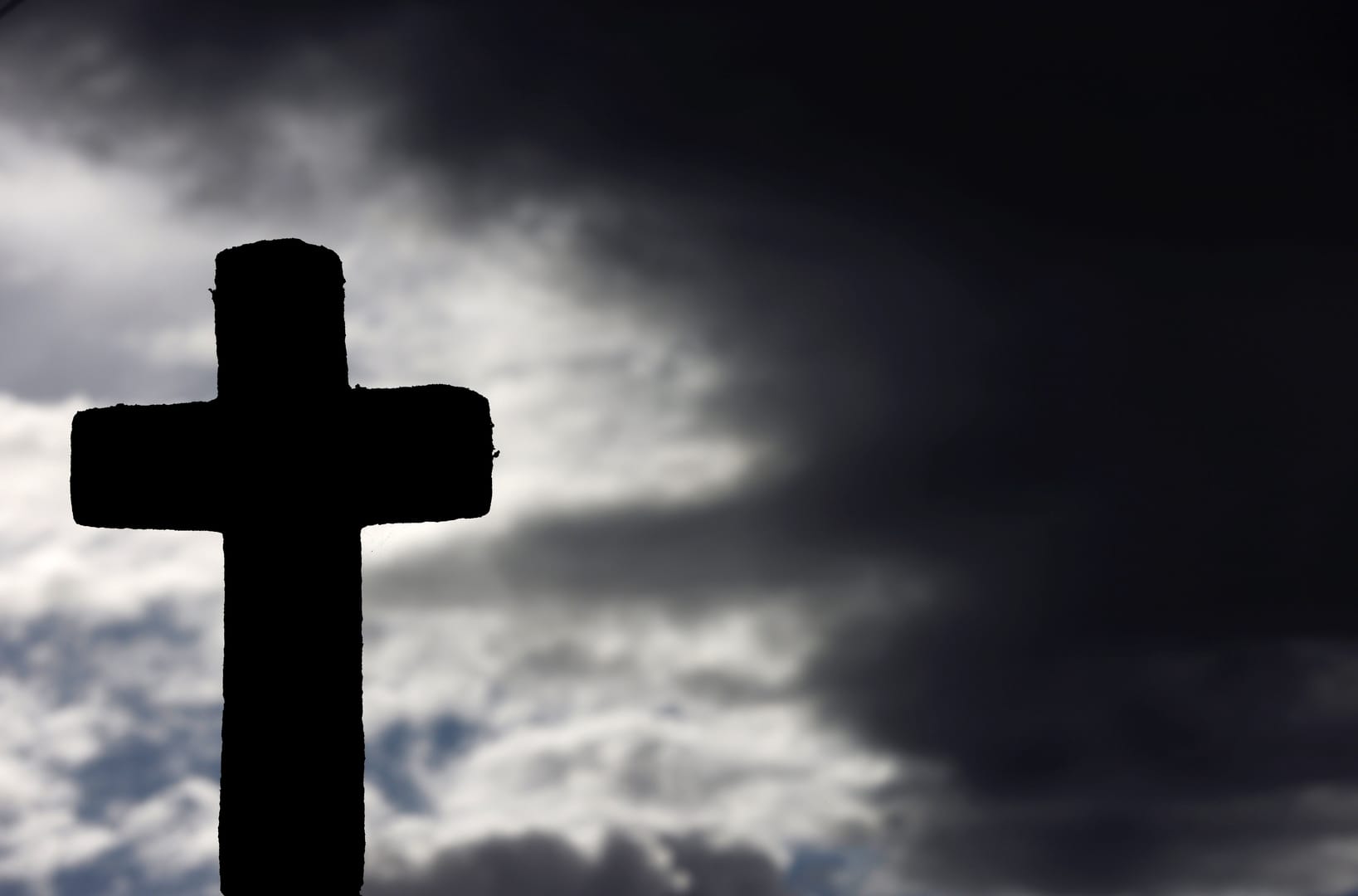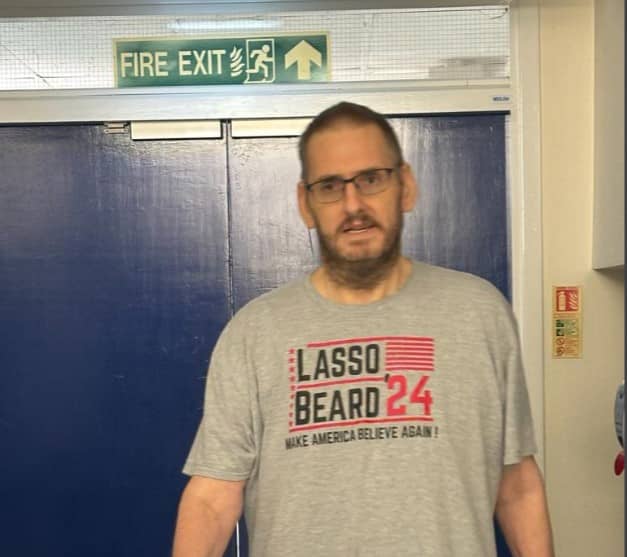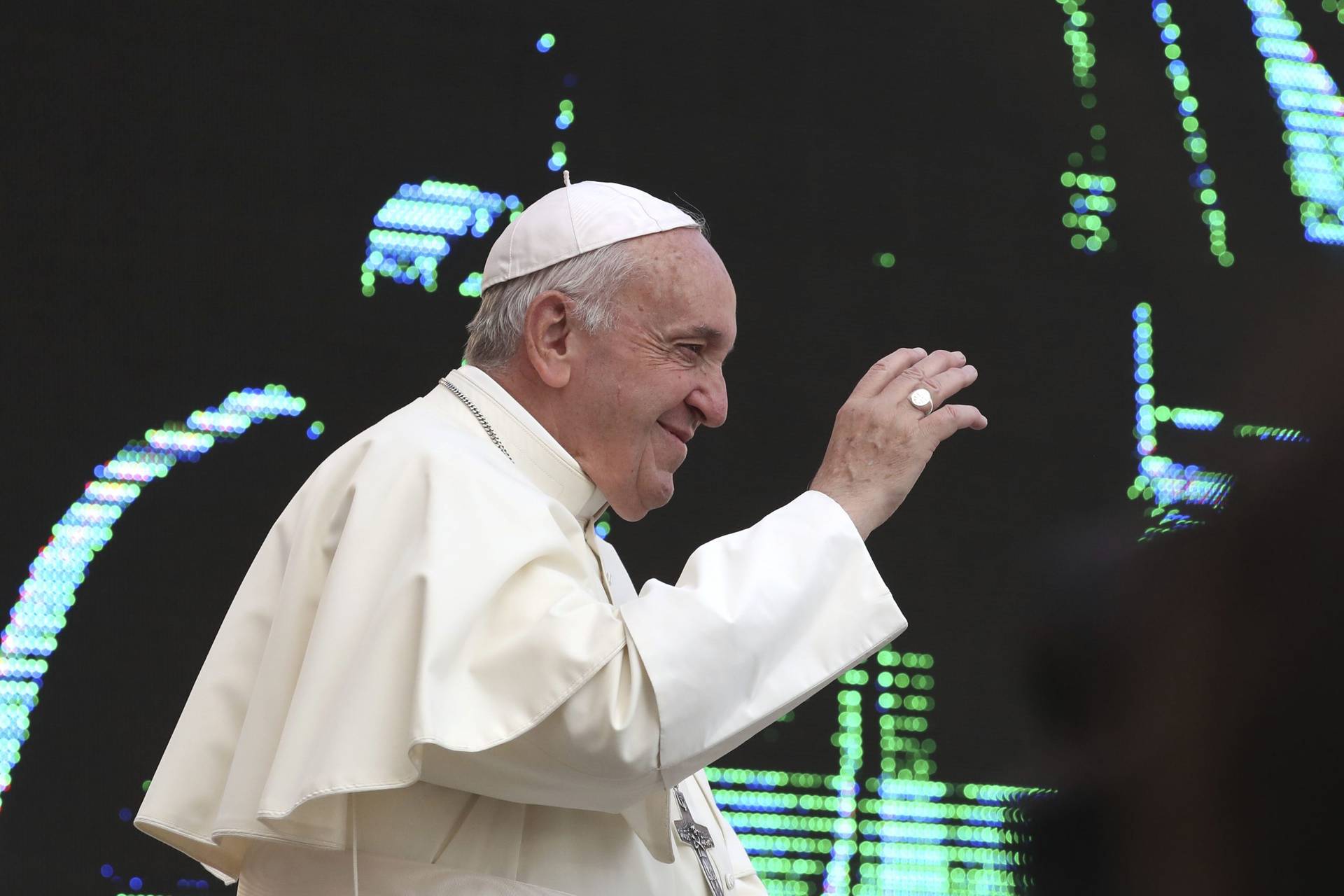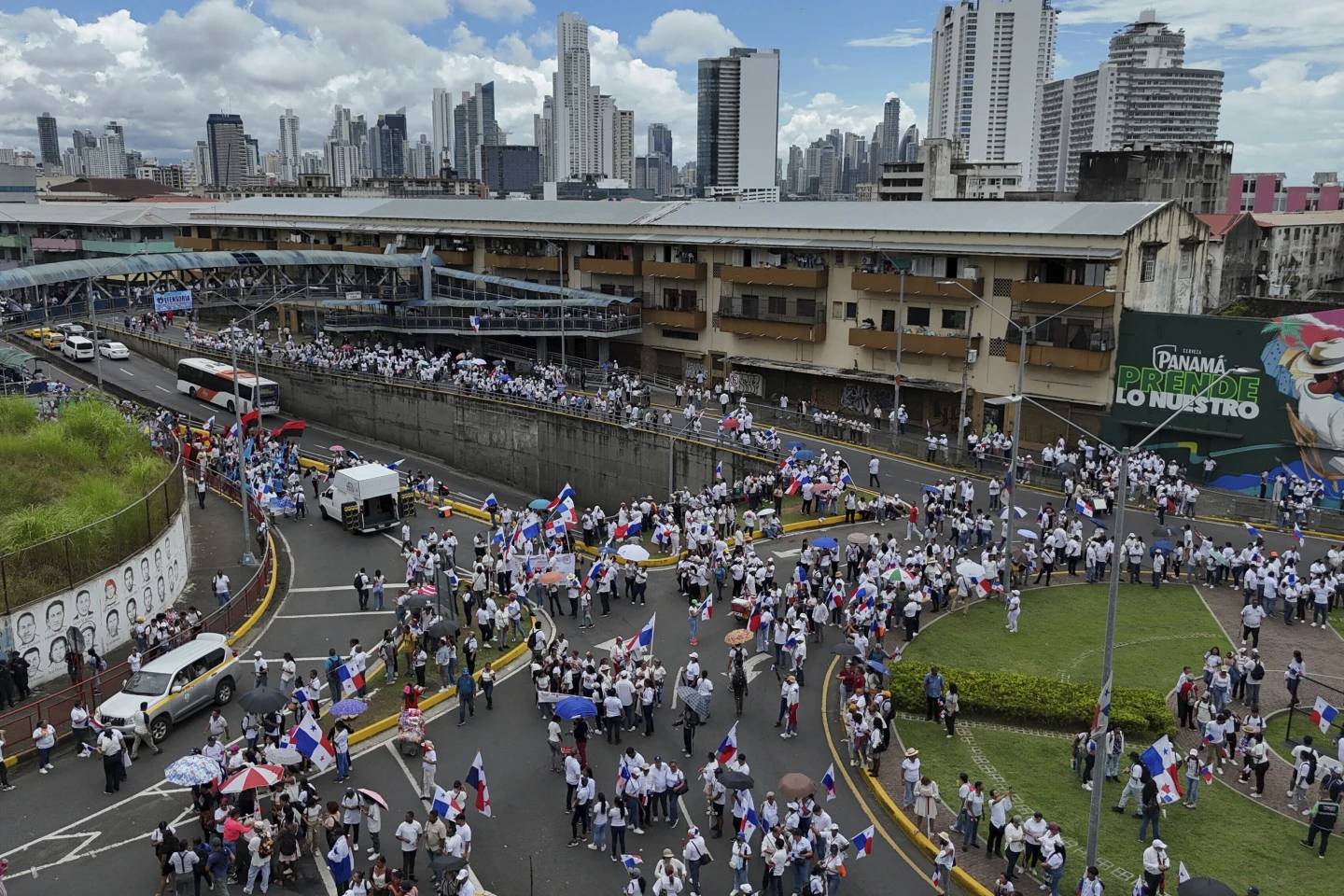During his visit to the United States, Pope Francis waded into the US culture wars with two private visits.
But how Church officials managed the narrative of those meetings suggest some internal discomfort about how one of the visits came to be — and how it’s being used.
The first meeting was with a group of nuns who are involved in a lawsuit against the Obama administration because of their opposition to the contraception mandate embedded in the Affordable Care Act.
Sometime Wednesday, Francis deviated from his thoroughly choreographed schedule to visit these women and to offer his support for their fight for religious freedom.
We know that because later that evening, the Rev. Federico Lombardi, the Vatican’s spokesman, told reporters about it.
Lombardi pointed out that Francis had spoken about US bishops and their quest for religious freedom during his speech at the White House earlier that day, and he said that the visit to the Sisters was “connected” to those remarks.
Archbishop Joseph Kurtz, president of the US Conference of Catholic Bishops, weighed in during the same press briefing.
“Freedom of religion requires us also to live out our faith,” he said. “The last thing the Little Sisters of the Poor want to do is sue somebody.”
After Lombardi’s announcement about the meeting, photos of the pope smiling and greeting the Sisters began to circulate online.
The next day, we now know, Francis met Kim Davis, the Kentucky clerk who was jailed because she refused to comply with a court order to issue marriage licenses, or allow her staff to issue them, because of her opposition to same-sex marriage.
News of this meeting was not made public until days after Francis left the United States, and it came to light not at a Vatican press conference, but when a veteran Vatican journalist broke the news Tuesday evening. Davis’ lawyers at the Liberty Counsel, an Evangelical nonprofit organization that works on issues related to religious freedom, then confirmed it.
Several hours later, Lombardi, back in Rome, said the Vatican would not deny that the meeting took place, but that he would not issue any more comments about it.
A spokesman for the USCCB said Wednesday that Kurtz, who was with Francis for nearly every portion of his visit, was not aware of the meeting until he heard the news when it broke Tuesday night.
(A spokeswoman for the Archdiocese of Louisville, which Kurtz leads, said the archdiocese is “following the lead of the Holy See” and would not comment about the meeting.)
Another USSCB official confirmed that the organization played no role in organizing the meeting with Davis.
Later on Wednesday, the Vatican’s newspaper announced that no photos of the encounter would be released.
Mat Staver, a Liberty Counsel lawyer, said “the Vatican” requested the meeting, but he would not elaborate on who had reached out. This led several reports to conclude that Pope Francis himself personally requested the meeting.
But according to someone with knowledge of the situation who spoke on the condition on anonymity because he is not authorized to speak publicly about the meeting, the apostolic nuncio (ambassador) to the United States, Archbishop Carlo Maria Vigano, arranged the Davis meeting.
Several calls and emails to Vigano were not returned Thursday.
Vigano was assigned to be the pope’s representative to the United States in 2012 by Pope Benedict XVI, and he was reportedly unhappy about the move. Earlier this year, Vigano was a featured speaker at the March for Marriage in Washington, where he was touted as “the official representative of Pope Francis.” (Kurtz also attended.)
The Davis meeting struck some Church observers as odd and a departure from the pope’s tone during his many public talks while in the United States.
Writing at America magazine, the Rev. James Martin said there are many unanswered questions, and he cautioned against reading too much into any one meeting.
“Did he know much about Kim Davis before meeting her?” Martin asked. “Was he following her case before he entered the country? Did he learn about the controversy from a local bishop after he arrived? Or was her story quickly relayed to him in a receiving line? And how was it explained to him?”
But at The Week, Michael Brendan Dougherty said the angst on the Catholic left about the Davis meeting is a result of the pope going against the narrative created for him by the secular press.
“Pope Francis is supposed to be the cool pope. He humiliates traditionalist cardinals. He embraces transexuals. If he occasionally says stuff against gay marriage, well, so what?” he wrote.
The pope’s message to Davis, according to Dougherty? “The world hates you. I do not.”
Vatican officials maintained their silence about the meeting until Friday, but Liberty Counsel did not.
Staver, the lawyer, told Time magazine Wednesday that his organization had not provided any background materials about Davis to Church officials, and that he was unsure if the pope knew the details of Davis’ situation.
Later in the day, however, Staver told NPR he was certain the pope was aware of Davis.
“He would know the background of the person. He would know who he’s meeting with. And obviously, he would know Kim Davis, and he would know the story of Kim Davis,” he said.
So while the Vatican and US bishops remained mum about the situation, Davis and her lawyers continued to set the narrative.
For her part, Davis, who is not Catholic, called meeting the pope “humbling” and said, “Just knowing the pope is on track with what we’re doing and agreeing, you know, kind of validates everything.”
But one Jesuit priest with close ties to the Vatican published a tweet Thursday with his interpretation of what transpired, comparing the Davis meeting to a Ugandan politician who claimed a papal endorsement after a routine encounter with Pope Benedict XVI in 2012.
2 good Popes who bless people not asking them ID (and then exploited) : #BenedictXVI with #RebeccaKadaga & #PopeFrancis with #KimDavis
— Antonio Spadaro SJ (@antoniospadaro) September 30, 2015
The Vatican not commenting on private meetings isn’t unique to Davis. Earlier this year, the Vatican would neither confirm nor deny that Francis had met with a transgender Catholic, and last year it did the same about a call Francis had placed to a divorced and remarried woman.
But early Friday morning, the Vatican’s spokesman finally weighed in after a meeting with Pope Francis. Lombardi issued a statement to “contribute to an objective understanding of what transpired.”
According to Lombardi, Davis was one “of several dozens persons who had been invited by the Nunciature to greet” the pontiff before he left Washington, stating that the encounter “should not be considered a form of support of her position in all of its particular and complex aspects.” Further, Lombardi said, Francis “did not enter into the details of the situation of Mrs. Davis.”
Very soon after, the Liberty Counsel released a statement challenging Lombardi’s–and the pope’s–recollection of the meeting.
So the question remains: Why did the pope’s own ambassador arrange the secret meeting, without the assistance of US bishops, leading to “non-denials” and an eventual distancing from the Vatican, as well as a sense of uncertainty about the pope’s intended message in Washington?
